Introducing the Rufous Fantail, a bird with the incredible agility of an airborne acrobat. Its tail, resembling a graceful Japanese fan known as sensu, enables seamless maneuvering and elegant movements.
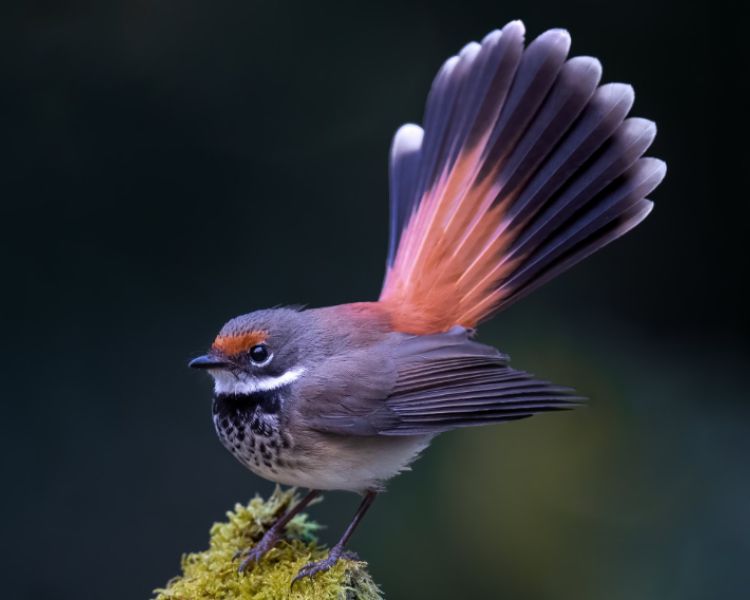
The rufous fantail, scientifically named Rhipidura rufifrons, is a petite to medium-sized bird belonging to the passerine family. It measures around 14.5 cm to 18.5 cm in length and weighs approximately 10 grams. This charming bird boasts a forehead adorned with a stunning reddish-brown hue that extends over its eyes. Just below this captivating feature lies a delicate white arc. Moving along to the top of its head, back of the neck, and upper back, you’ll notice a gradual transition from olive to reddish-brown tones. This arrangement effortlessly merges into a mesmerizing long tail formed in a fan shape, tinted with a blackish-brown shade. Its ear-coverts, on the other hand, sport a sleek black coloring, beautifully contrasting with the bird’s white throat. Among its defining characteristics, a bold black bar stretches across its upper breast. Below this striking bar, the lower breast exhibits a soft off-white shade scattered with delicate black spots, resembling scales.
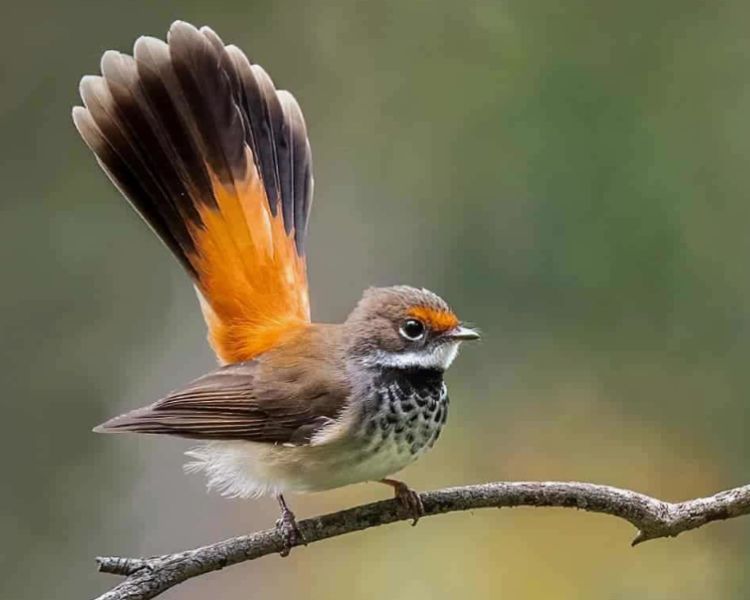
The bird has brown eyes, bill, and feet, creating a harmonious color scheme. It is quite challenging to distinguish between the male and female as they possess a strikingly similar appearance. However, one may notice that, on average, females tend to be slightly smaller in size compared to their male counterparts.
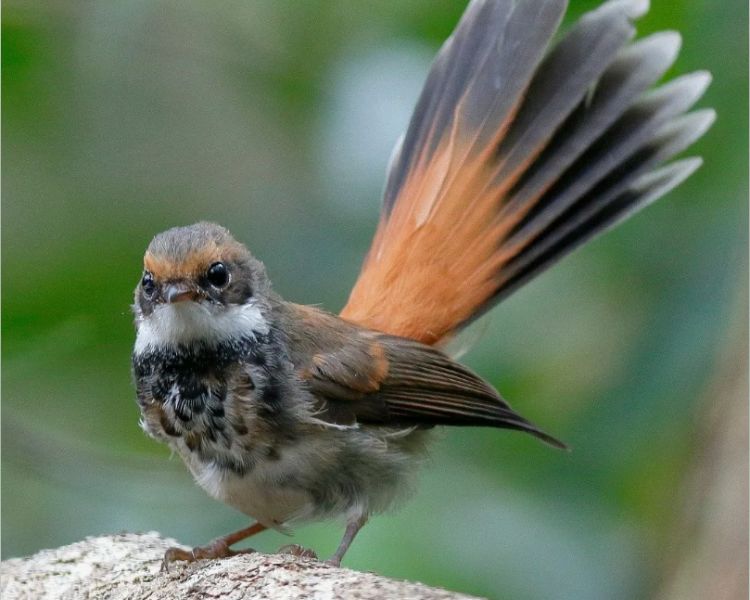
The Rufous Fantail can be spotted in various regions such as Australia, Indonesia, Micronesia, New Guinea, and the Solomon Islands.
These specific areas serve as ideal habitats for the Rufous Fantail, as it tends to thrive in rainforests, wet forests, swamps, woodlands, and even among mangroves.
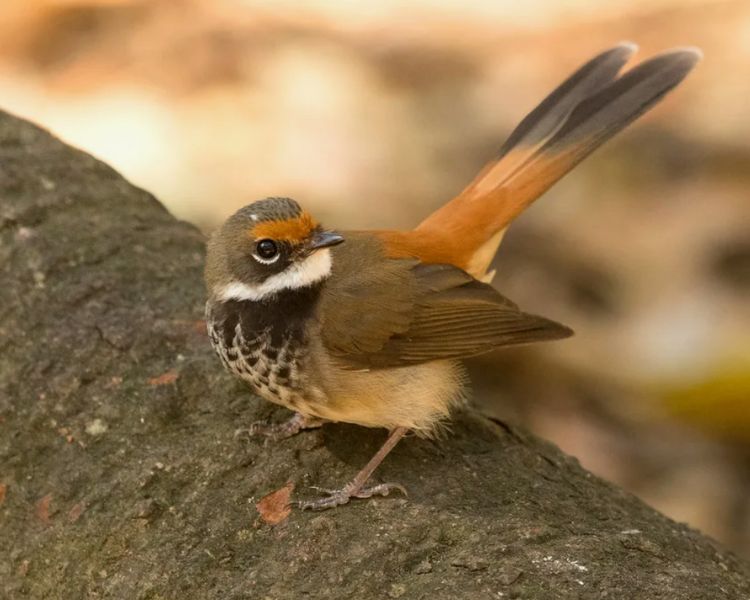
Rufous fantails are most commonly found in the lower sections of their forested habitats, specifically in the understorey or sub-canopy regions, where they prefer to remain within 6 meters from the ground. In these areas, these agile birds skillfully hunt and feed on insects.
When it comes to nesting, Rufous fantails form pairs and work together in search of a suitable location, although the final decision is made by the female. Typically, they opt for nesting sites in rainforest areas or sheltered gullies with high humidity and ample cover. The nest is commonly situated in a forked position near a water source like a stream. Its structure is often likened to a wine glass with a broken bottom stand. Constructed primarily during the months of November, December, and January, the nest is made using thin strips of tree bark, grass, moss rootlets, and decaying wood.
Once the nest is complete, the female lays three to four eggs inside. These eggs have a light brown hue accompanied by purplish markings and spots, and are generally round or oval in shape. Both parents actively participate in caring for the young after they hatch. It takes approximately four to five weeks for the young birds to become fully independent and capable of flight.
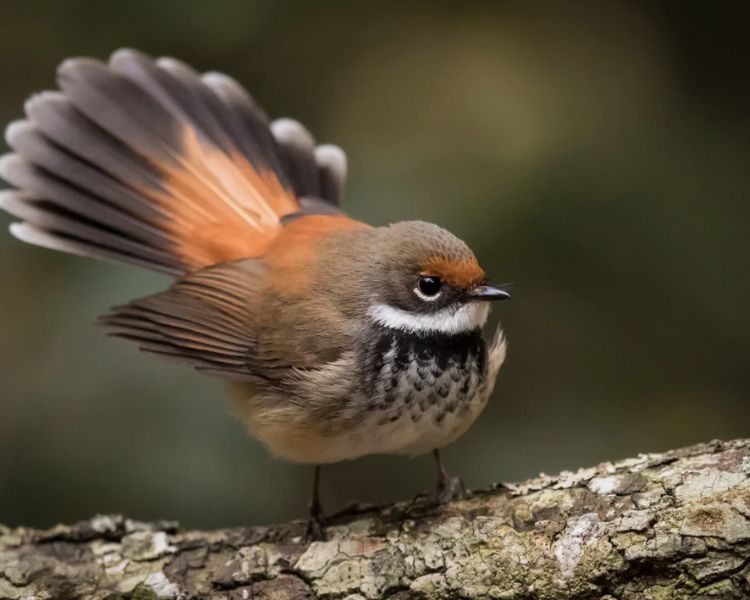
The distribution of this particular species is exceptionally extensive, and although its population is believed to be decreasing, the decline is not occurring rapidly enough to warrant classifying the species as vulnerable. As a result, according to the IUCN list, the species is currently labeled as being of minimal concern.
